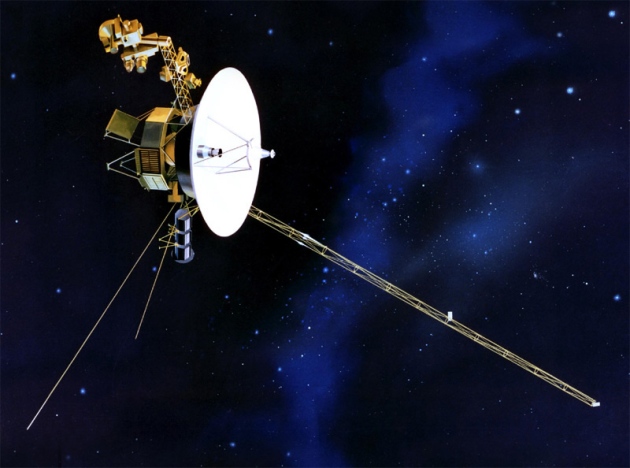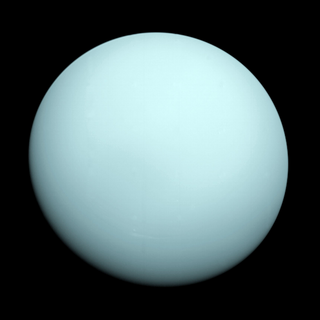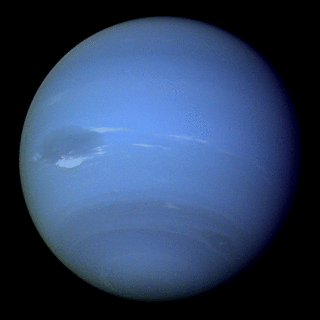[FOX SCI-FAIR] AMAZING FLIGHT
 •
by
•
by Feynmann

Hey guys,
My new article is part of the Fox Company's media mission - The Fox Company Science Fair.
I was not sure what I wanted to talk about in here. The well of amazing scientific discoveries and natural wonders is endless and surely there are countless brilliant scientists who's stories should be at least as well known as the stories of the popular musicians and actors.
Our Honorary Fox Friend mittekemuis already told the stories of 3 brilliant female scientists. You can check her article: "Science and women" .
But I decided to tell a different story:
A story of Curiosity
A story of Discovery
A story of Passion
A story of Humanism
A story of Unity
A story of Dreams
A story of Love
A story of never ending drive for knowledge
...
THE STORY OF VOYAGER


The Voyager 1 and Voyager 2 spacecrafts were launched in 1977 - Voyager 2 was launched earlier - 08/20 followed by Voyager 1 on 09/05.
The initial mission was to explore the gas giant planets - Jupiter, Saturn, Uranus and Neptune. This was possible due to a rare alignment of those planets, that happens about once in every 175 years and was due in the late 70s. This allowed the two spacecrafts to benefit from the gravitational assist of both Jupiter and Saturn and the opportunity to explore Uranus and Neptune.
And then the probes were to venture the icy outer regions of the Solar system and beyond ... into the deep ocean of interstellar space.
Both probes were set to pass Jupiter and reach Saturn, separating their trajectories after Saturn.

Voyager 2 trajectory was set to allow flybys of Jupiter, Saturn, Uranus and Neptune.
Voyager 1 was set along a shorter and faster trajectory that was designed to provide an optimal flyby of Saturn's moon Titan. Titan was/is a particularly interesting moon, because of its size and the presence of a dense atmosphere on its surface. Titan was so important for the mission, that in case Voyager 1 had failed to successfully complete its flyby, Voyager 2 was to be redirected to Titan and its further progress stopped.

The vast array of scientific instruments on both spacecrafts provided detailed and previously unknown features of the planets Jupiter and Saturn and their moons.
The first close up images of Jupiter's cloud forms, winds, and storm systems were captured by the Voyager spacecrafts.
Volcanic activity was discovered on Jupiter's closest moon Io.
Water vapor was detected on Jupiter's moon Europa.
Saturn's rings were found to have enigmatic braids, kinks, and spokes and to be accompanied by myriad "ringlets."
Voyager 1 provided flyby photos of Saturn's moon Titan, confirming the presence of a dense atmosphere.
These results paved the way for a the development of a new generation of space probes to explore Jupiter and Saturn and their moons.
As a legacy of Voyager, Cassini (for Saturn) and Juno (for Jupiter) space probes were built and have provided us with some amazing images and data of both planetary systems (the Cassini mission, of course, was recently ended).
If you want you can check some amazing High resolution images provided by:
JUNO & CASSINI
To this day Voyager 2 remains the only spacecraft, to have visited the planets Uranus and Neptune.
A substantial magnetic field was discovered on Uranus and 10 additional moons.
Its flyby of Neptune uncovered three complete rings and six hitherto unknown moons as well as a planetary magnetic field and complex, widely distributed auroras.
Uranus as seen by Voyager 2

Neptune as seen by Voyager 2


While the Voyager 2 was conducting its flyby of Neptune, Carl Sagan managed to persuade the mission directors to point the probe in the direction of Planet Earth and take a photo of it.
The result - a "pale blue dot", barely noticeable amidst the rings of Neptune
Soon after the image was taken Carl Sagan delivered his famous "Pale blue dot" speech when he presented the image to the general public.
I strongly recommend everyone to spare a few minutes and listen that speech. CLICK

The Voyager Interstellar Mission (VIM) began in 1989, after Voyager 2 completed its flyby of the planet Neptune.
The main goal of the VIM was to explore the outer regions of the Solar system and beyond as deep into the interstellar space as possible.
One of the most important goals of the Voyager interstellar mission was investigating the outer boundaries of the Sun's magnetic field - the so called heliopause.
Most of the scientific equipment on both probes was shut down in the late 90s, except the ultraviolet spectrometers (UVS) and UV data, relevant for the solar wind extension, is still gathered.
As of August 2012, data sent by Voyager 1 suggested that it is the first human-made object to ever enter interstellar space.
Due to the gravitational assist from Jupiter and Saturn the Voyager 1 spacecraft is currently the fastest moving spacecraft sweeping along the interstellar ocean with the amazing speed of 17 km per second.

One of the most famous and publicly discussed aspects of the Voyager mission was the "Golden record".

It is a 12 inch golden plated phonograph record, carried by both Voyager spacecrafts.
The contents of the record were selected for NASA by a committee chaired by Carl Sagan.
Dr. Sagan and his associates assembled 115 images and a variety of natural sounds, such as those made by surf, wind and thunder, birds, whales, and other animals. To this they added musical selections from different cultures and eras, and spoken greetings from Earth-people in 55 languages printed messages and diagrams and a lot more.
You can learn more about the contents of the Golden record HERE.
The record was designed both as a time capsule, telling the story of our world and of humanity and also a message from humanity, if the spacecraft is discovered by an intelligent alien civilization.
Along with the instructions on how to play the record, there is also the Solar system's "space address", written on the cover, encoded by the position of the nearest 14 pulsars - extremely bright and rapidly rotating stellar objects. Every pulsar has a specific rotation frequency. The rotation frequency of our 14 nearest pulsars is written on the cover, so that an intelligent alien civilization can locate them and determine the location of the Solar system.
If you want to learn more for the Golden record cover click HERE

Even when both apparatus' vital system fail (that is expected to happen around 2025) and no communication with them will be available they will keep drifting in space for millions of years, probably surpassing the lifetime of our human civilization.
So we have our time capsules the drifting into space.
Whether it was complete or not, that is not for me to decide.
Whether people will laugh at the prospect of aliens trying to play a golden record is irrelevant.
Whether we will ever be as united and driven by the common goals of discovery and curiosity and love as were the people who assembled that record is to be dreamed upon.
Whether we will choose this to be the only remnant of the human civilization is up to all of us to decide.
Whether we will be the HUMANS, as described in that Golden record is a goal to be perused ...
Thank you for your time
ALWAYS BE GOOD TO EACH OTHER
CHEERS!!!



Comments
[FOX SCI-FAIR] AMAZING FLIGHT
www.erepublik.com/en/article/2656640
The Solar system is much larger we can imagine, and planets are only small particles spread on soccer field. If voyager can describe what he experienced and what he felt when he found the pale blue planet, we can make an amazing movie.
I love this calm article
Indeed, we can, but I think Carl Sagan pretty much said it all, on his Blue dot speech 😉
Thank you
It is amazing what already is discovered in so less years. I hope we will be able to discover so much more together. Be good to each other and we can!
🙂
o7
It is funny you are writing about this subject. I was reading something amazing just the other day.
http://www.dailymail.co.uk/sciencetech/article-5101171/Comet-solar-shaped-like-CIGAR.html
Thank you for the article!
I just read that, yesterday too 😛
17km seems fast but still it takes years to even travel half way across our solar system. At this rate it was estimated that several thousand years would be needed to navigate our galaxy. Roll on light speed drive.
Yeah, it seems fast, but only for the human perspective 😉
Yeah, space-foxy))
o7
u space & u know it?)))
To boldly go where no one has gone before
Exactly 😛
Nice!🙂
🙂
what a nice article
Thanks mate 🙂
Ur-anus LOL
I have found the recording from that record on the internet. Awesome, you should listen to it! Or have you already?
❤
I have, right after I first encountered Carl Sagan.
Carl Sagan smoked weed. 😉
Plant a USA flag on each comet and planet and exploit mineral resources. This is American business.
not on me, plz
my comment was a criticism of the well-known American imperialism, you are safe bro 😛
Voyager Probe is such a cool story, thanks for sharing!
You're most welcome 😛
o7
you know that trajectory looks an awful lot like the 6 infinity spiral... i love this article it makes me want to reach out and find out what humanity destroying/devouring creature may be out in the universe Whoo \o/
There is a Bulgarian song on the Golden record. 😛